from Series Magritte
Mark Young
January 2023
Poems inspired by the paintings of René Magritte
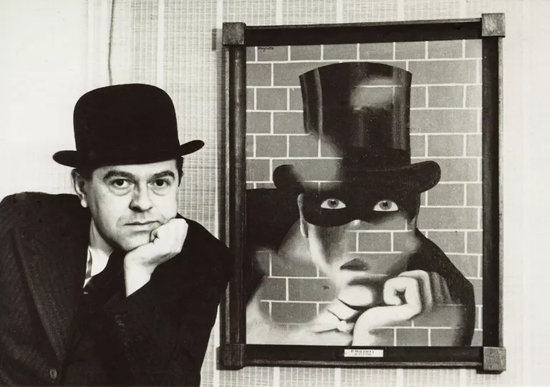 René Magritte et Le Barbare, 1938
René Magritte et Le Barbare, 1938
The only way to capture Fantômas is to enter his dreams. — René Magritte
The Luftwaffe’s first bombing
run on London; & Magritte’s
first one-man show in that city
shut down by it. Several pain-
tings destroyed, including Le
Barbare, one of Magritte’s many
homages to Fantômas. This photo
all that is left to remember it by,
could easily be titled Fantômas et
son doppelgänger, two masters of
the magical, one able to vanish
at will, the other able to make
the invisible visible. Both wear the
formal costume of the magician:
one is disappearing before our
eyes, of his own accord. The other
large as life, but wondering if he
will have the strength to make the
barbarians he can’t see coming
disappear before they can arrive.
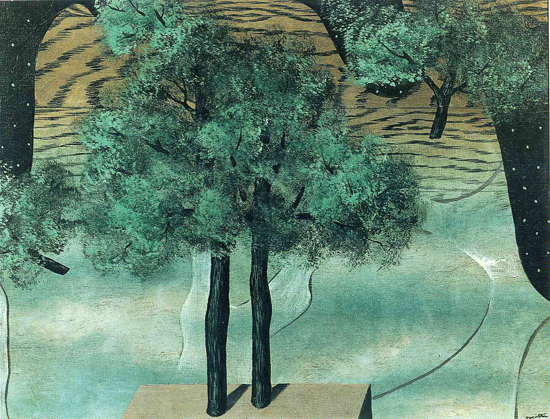 The Cultivation of Ideas, 1927
The Cultivation of Ideas, 1927
He stands at the
end of a diving
board, the pool a
palette with limited
colors. Or so it
seems. & yet. The
man reflects upon
the pool. He has no
idea how deep it
is. Until the dive.
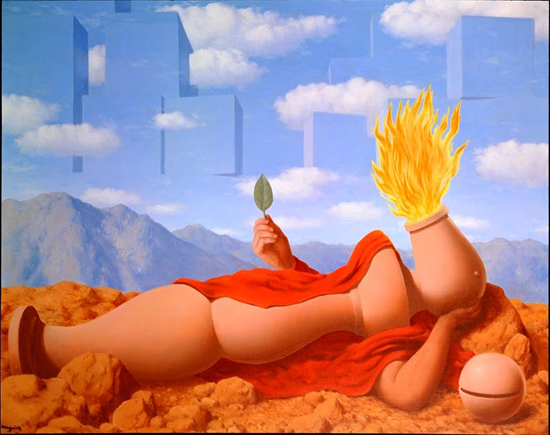 Elementary cosmogony, 1949
Elementary cosmogony, 1949
It’s the same
principle as
picking the wine
to go with your
meal, except in
reverse. That first
leaf you consider
often determines
what sort of day
it’s going to
accompany.
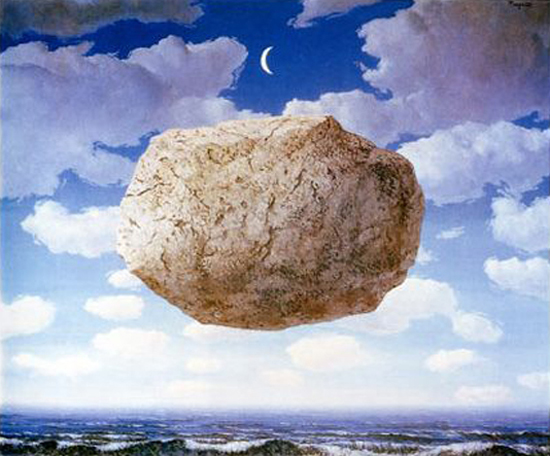 La Fleche de Zenon, lithograph after 1964 original
La Fleche de Zenon, lithograph after 1964 original
At this point in time
the rock is not falling
or hovering or travel-
ing in a straight line
between two points.
At this point in time
the waves are not
crashing on the shore,
the clouds are still, &
the moon has stopped
orbiting the Earth. At
any point in time, says
Zeno, an arrow is not
moving to where it is
going or where it is not.
No time elapses; so how
can it move? It is already
here, so how can it move
here? At this point in
time I am watching the
movement of a painting
that does not move &
yet it moves this viewer
even though, at this point
in time, the viewer is
motionless.
 Mental Complacency, 1950
Mental Complacency, 1950
My grandfather was
a technician for Ma
Bell. He said, “We are
complacent in our
color attributions. The
only way to receive a
signal is to eliminate the
noise. There are no co-
incidences, merely portals.”
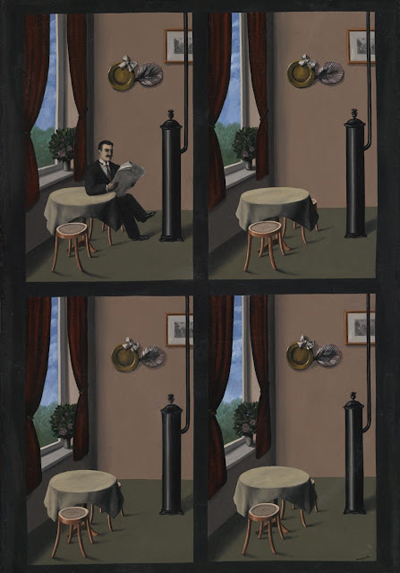 Man with a Newspaper, 1928
Man with a Newspaper, 1928
Seeing several
frames within the
painting allows that
a central premise
could be: today &
yesterday are so alike
a past image can be
positioned to present the
present in such a way
Derrida himself might
find it hard to tell if
what happened then
has happened now
or has time reversed.
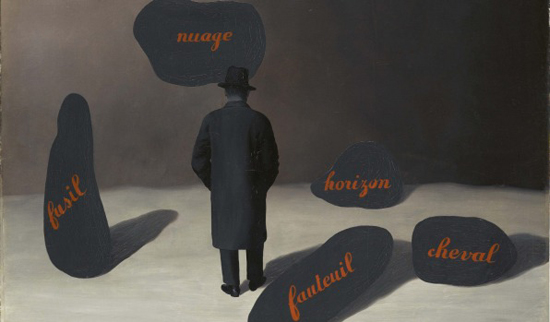 The Apparition, 1928
The Apparition, 1928
They’re keywords. That
much he recognizes
even if he doesn’t
recognize the discipline
that they come from. “The
labels could mean any-
thing,” he thinks. Which
means. He carries one
himself. Or two. He doesn’t
think. Which means.
He isn’t. He appears.
Walking towards
one of two horizons.
Which means. They
may not be.
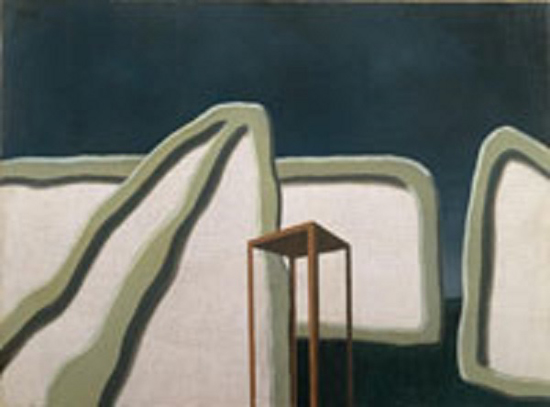 Le Prisonnier, 1928
Le Prisonnier, 1928
It’s probably something I
learnt from — copied from? —
Magritte, the giving of titles
that bear no relation to the
item in question, whether it
be poem or painting. Here
he lines up abstract shapes,
inserts a table — not of con-
tents but rather something
you’d find in a hallway — &
parks them in front of a barely-
discernable background that
would later be developed
across the years into what
would come to be described
as a typical Magritte land-
scape, then titles the painting
with a name that apparently
has no resemblance to what is
going on within its confines.
Ernst describes it as a collage
painted by hand. I’d agree:
but also see in it a statement
of future intent — never be im-
prisoned by the fear of change.
from Series Magritte, ongoing since 2004 →
◊
Mark Young was born in Aotearoa / New Zealand but now lives in a small town in North Queensland in Australia. His most recent books are Songs to Come for the Salamander: Poems 2013-2021, selected & with an introduction by Thomas Fink (Meritage Press & Sandy Press); Your order is now equipped for shipping (Sandy Press); & The Advantages of Cable (Luna Bisonte Prods).
You can read a review on Mark Young’s latest books on Arteidolia →
